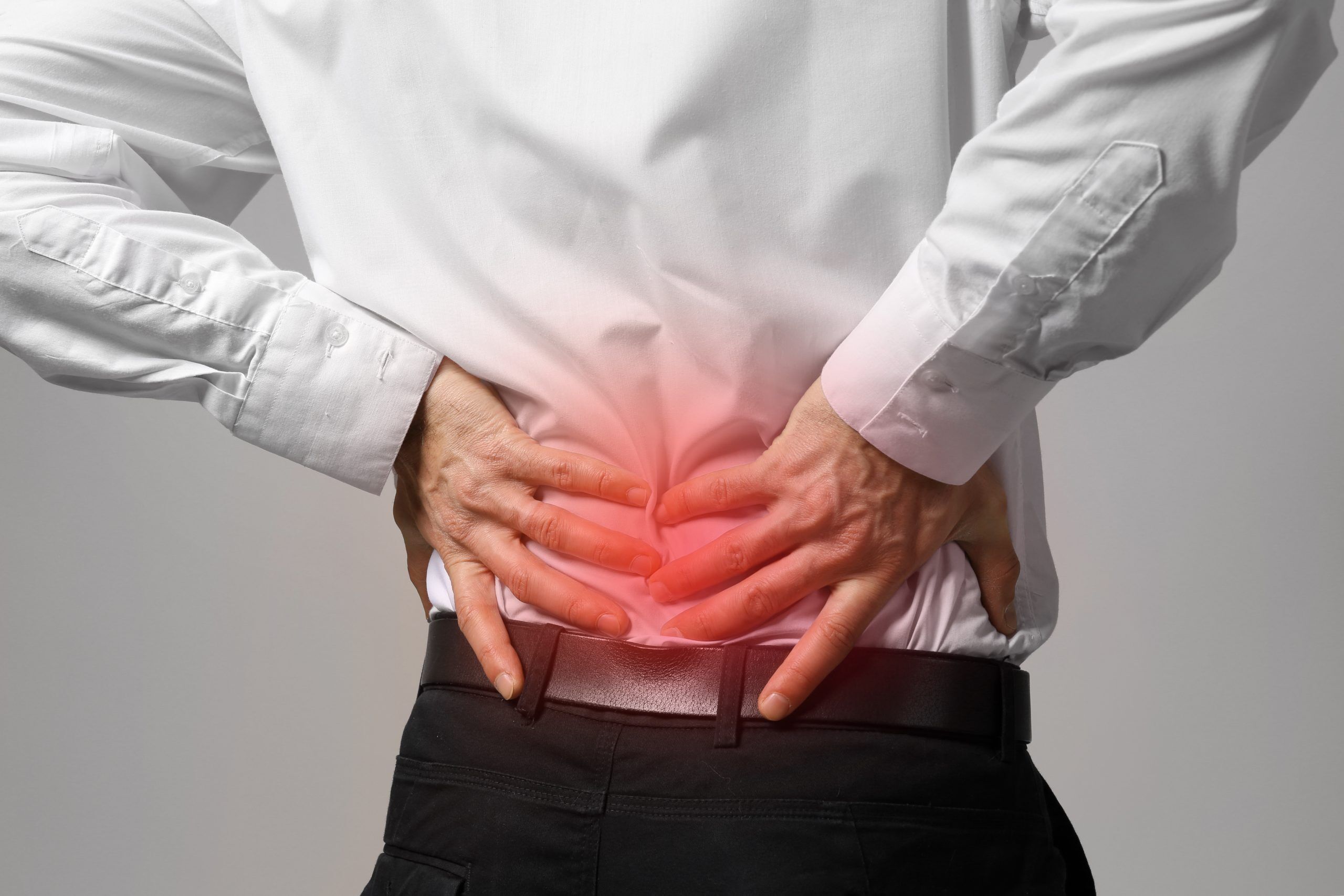Three Common Causes of Lower Back Pain

Our lower back is responsible for much of the twisting, turning, lifting, and straightening that we do throughout our lives. Unfortunately, it is also an area that is commonly injured in day to day activities. In other words, most people experience lower back pain at some point or another, even if they are not involved in any particularly strenuous activities. Here’s why:
Aging
The simple truth is that aging can have a negative impact on spinal health. Your lower back starts out flexible and strong, able to recover quickly from any task you put it to. However, as we age, the discs and facet joints that connect our vertebrae together will continue to degenerate leading to a stiffer and less flexible spine. Thus, trying to lift or twist can cause undue stress to the vertebrae even if you are performing an action that you have done oftenly in the past.
Poor Habits
Lower back pain can also be caused by poor habits in your daily life. For instance, remaining sedentary for extended periods of time in front of a computer or TV, or slouching in a chair or driver’s seat can cause your lower back to change shapes in response to your posture. Proper exercise and stretching are a good way to protect yourself against lower back pain through the years. This is important because most people experience this type of pain associated with long hours spent at the office over the course of a career. Make the most of your daily breaks to stretch your spine and take a little walk.
Overuse
Perhaps the most notable of lower back pain causes is pain associated with sprains and strains. This pain is different from other lower back pain because it comes on suddenly after your back has been put under stress. The problem is that your spine heals rather slowly, so even a minor sprain or strain can cause pain for weeks on end. Sprains and strains happen most often when someone attempts to lift something that is too heavy, or repeatedly lifts heavy objects using their back instead of their legs. This puts extreme stress on the lower back and can cause ligaments and muscles to tear, as well as increasing the risk of herniated discs, crushed vertebrae, and more. Depending on the severity of the injury, rest, therapy, or surgery may be needed to recover.
If you are suffering from ongoing lower back pain, and you want to narrow down the causes, Royal Spine Surgery is here for you. Our team will work with you to diagnose the exact cause of your pain, and look for solutions so that you can enjoy life without nerve and muscle pain in your lower back. Contact us today to learn more.
About The Author
-

Dr. Abdulhamid is a highly skilled and experienced board-certified neurosurgeon with a passion for providing exceptional spine care. He specializes in minimally invasive spine surgery and has a reputation for achieving outstanding results for his patients. His commitment to excellence and patient-centered approach have earned him the trust and respect of his patients and colleagues alike.
RECENT POSTS
Three Reasons to Turn to Physical Therapy for Back Pain
Did You Know: Your Diet Could Be Contributing to Back Pain?
Exploring the Types of Back Surgery: A Comprehensive Guide
What to Expect During Spinal Decompression Therapy
Tips on How to Maintain Good Spinal Health
How You Can Protect Your Lumbar Vertebrae
Reasons to Discuss Your Back Pain With a Doctor
Understanding Dorsalgia: Causes, Symptoms & Treatment
How to Relieve Lower Back Pain at Home
What is Lumbago? Causes, Symptoms & Treatment
What To Do When You Experience Neck Pain
What Is Ultrasonic Spine Surgery?
How to Do Back Exercises for Back Pain
Ouch! Lower Back Spasms - Causes and Treatments
Why Have I Developed Back Pain After Surgery?
The Purpose of Spinal Decompression Surgery
Three Common Causes of Lower Back Pain
How to Prevent Back Pain at the Office
The Best Ways to Sleep With Back Pain
5 Daily Exercises for Better Spine Health
Is Your Mattress Causing Your Back Pain?
Supporting Back Health While Golfing